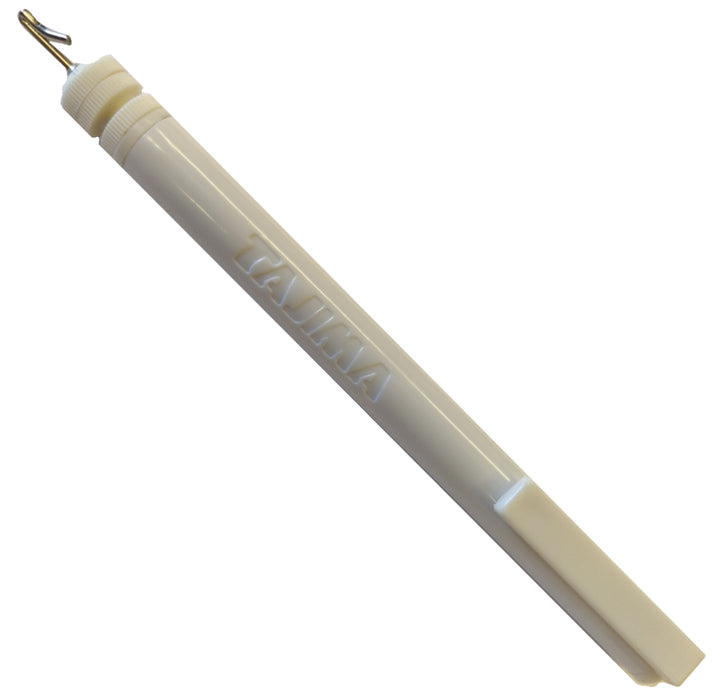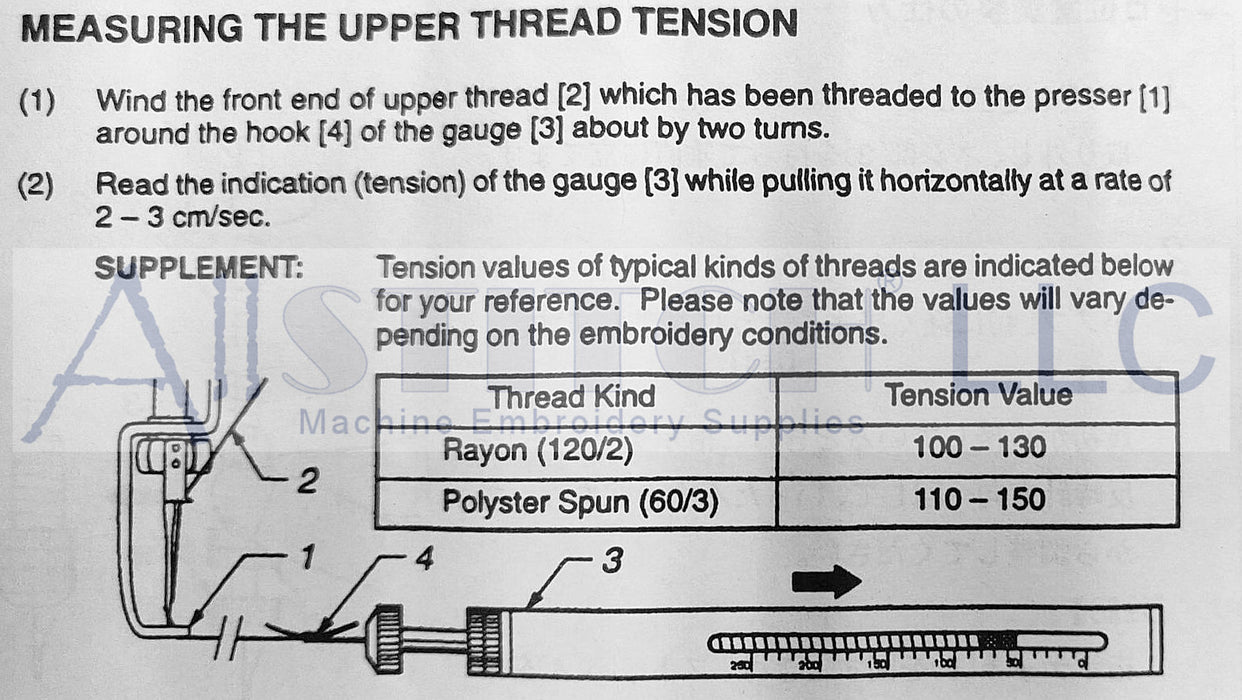
Tajima Embroidery Thread Tension Gauge
Tajima thread tension gauge tool enables embroiderers to measure and adjust top thread tension on both commercial and home machines. The tension gauge is hooked to the top thread from the presser foot and by pulling on the thread the embroiderer can determine the tension the embroidery machine is exerting on the thread. The embroiderer can then adjust top tension until the desired level of embroidery thread tension has been attained.
- Madeira Rayon thread usually should run between 110-125 grams.
- Madeira Polyester thread usually should run between 115-130 grams.
How to Use an Upper Thread Tension Gauge
Take the guesswork out of setting thread tensions. Using thread tension gauges makes it easy to adjust both bobbin and upper tensions. It's quick, easy and will help you eliminate unsightly bobbin thread showing on top, looping top stitches and thread breaks. Your embroidery will look its best with consistent, balanced thread tensions. Here's how to use a top embroidery thread tension gauge to take the tension out of setting tensions!
Instructions for Use:
- Pull approximately 6 inches of thread through the needle and presser foot.
- Wrap the thread around the gauge hook (sometimes it's necessary to wrap it several times so it won't slip).
- Steadily pull the gauge towards you with the window of the barrel facing up.
- As you pull, take note of the reading. These represent tension readings in grams. Polyester threads require higher tensions than Rayon. Polyester tensions 120 to 150 grams. Rayon tensions 100 to 120 grams.
- Adjust your machine main tension knob until you get the desired reading.
- First run the fill stitch test pattern.
- If you experience any top stitch looping, slowly tighten the main upper tension knob until this looping goes away (looping can also occur if your bobbin tension is too tight).
- Proper tensions for satin stitches should reveal 1/3 bobbin and 2/3 top thread color on the underside of the embroidery.
Note: Too much bobbin showing on the underside and/or showing on the topside usually means either the bobbin tension is too loose or the top thread tension is too tight
Top thread tensions may vary up or down by as much as 5 to 10 gf.
Rayon #40: 150gf
Polyneon #40: 170gf
Metallic #40-50: 170gf
Polyester CR #40: 125gf




